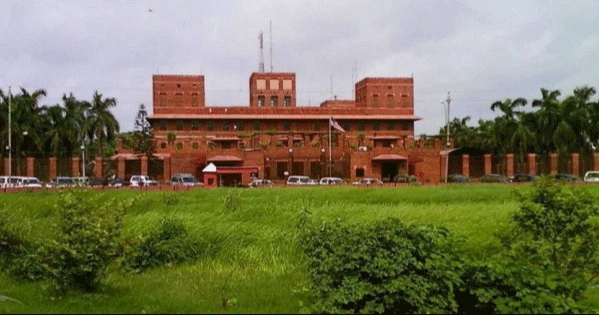Is net reserve$16 billion?
Mahfuz Emran: The dollar crisis that started in the country since the beginning of last year has not yet ended. That is why the central bank continues to sell dollars in the open market. Besides, the reserve is decreasing to meet other liabilities and repay the debt. However, foreign exchange reserves have increased after receiving loan installments from International Monetary Fund (IMF) and Asian Development Bank (ADB).
At present, the total amount of reserves in the country has increased to $25.82 billion. However, if calculated according to IMF’s Balance of Payment or BPM-6 method, the amount of Gross International Reserve (GIR) will be $20.41 billion. Bangladesh Bank Spokesperson and Executive Director Majbaul Haque presented this information in a press conference.
However, Bangladesh Bank does not publish the Net International Reserve (NIR) account. However, NIR will be available after settlement of transactions as Asian Clearing Union (ACU) liabilities, IMF loans and foreign currency clearing (FC) of banks from GIR; Bangladesh Bank officials mentioned that it will be around $16 billion.
In the recently published IMF’s overall assessment of the economy of Bangladesh, the GIR of Bangladesh decreased to $20.3 billion at the end of last October. And NIR decreased to $15.9 billion. That is, the difference between gross and net international reserves was $4.4 billion.
Meanwhile, GIR stood at $20.4 billion after adding loan installments from IMF and ADB last Friday. According to this, NRI will stand at $16 billion.
Incidentally, on December 13, Bangladesh’s GIR was $19.17 billion under the BPM-6 system. Then, on December 15, the second installment of the IMF loan of $689.8 million and $400 million of the ADB loan were added to Bangladesh’s reserves.
According to sources, the actual account of reserves has been in hiding for several years. At one time, only total reserves were published, which the IMF objected to. As a loan condition, the reserve account is being disclosed in BPM-6 system from last June. But it is GIR, from which some elements are removed to get NIR. Although the NIR calculation is only reported to the IMF by Bangladesh Bank.
In a press conference last June, Bangladesh Bank Governor Abdur Rauf Talukder said that Net International Reserve (NIR) data will not be published. This information will only be communicated to the IMF.
According to the IMF report, the country’s net reserve or NIR was $19.6 billion last June. It decreased to $15.9 billion in October. In other words, net reserves decreased by $3.7 billion in four months.
Meanwhile, at the beginning of November, Aku’s debt was paid for $1.17 billion. In that month, the net reserve is supposed to fall below $15 billion. However, after adding $1.09 billion of loans from IMF and ADB, even if the net reserve increases, it will remain around $16 billion.
However, the IMF has given a revised target of keeping net reserves at $17.78 billion at the end of this month. This target was given recently while disbursing the second installment of the loan. However, before the start of debt relief, initially the target of reserve conservation at the end of December was $26.81 billion. That is, the revised target has been discounted by $9 billion. However, the central bank is doubtful about achieving this target.
Earlier, Bangladesh failed to maintain net reserves in June and September. That is why Bangladesh Bank asked IMF to exclude this condition from the review list of the progress report of the implementation of the first tranche.
According to the IMF report, at the end of June 2024, the net reserve including the RSF fund will be $20.11 billion, with this amount of reserves, there will be the ability to meet the import liability for about two hundred and two months (2.3 months). However, excluding the RFS fund, the net reserve will stand at $19.68 billion.
Experts consider this amount of reserves to be risky. Bangladesh Bank’s former Chief Economist Mustafa K Mujeri said in this context that the level of reserve now is not critical but it is worrisome. It is also retained through forced import controls. Otherwise, it would have decreased further.
Note that the reserve in Bangladesh in the fiscal year 1994-95 was $3 billion or a little more than $3 billion. In the fiscal year 1996-97 it came down to $ 1 billion. Reserves did not cross the $2 billion level until the 2001-02 fiscal year. After that the reserve gradually increased. In the 2008-09 financial year, when the global recession hit, the reserves fell from $7 billion to $5 billion. It gradually increased thereafter and the total reserves exceeded $48 billion in August 2021 when imports fell due to Covid and there was a big surge in expatriate income. But after that, the reserve is continuously decreasing even if it increases slightly in some months.
President Joe Biden tests positive for COVID-19 while campaigning in Las Vegas, has ‘mild symptoms’
International Desk: President Joe Biden tested positive for COVID-19 while traveling Wedne…








